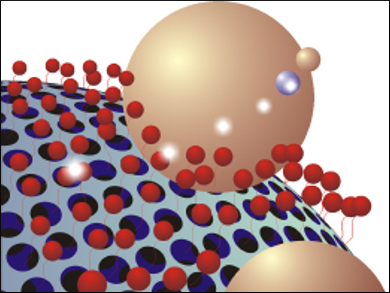Silver nanoparticles (AgNPs) have attracted much attention because of their unique optical, electronic, and antibacterial properties, and their potential applications in diverse fields such as biosensing, photonics, and catalysis. The current drawback is that the synthesis of AgNPs is usually complicated, and suffers from high costs and low volumes.
Xiaoyang Liu, Jilin University, Changchun, China, Qihui Shen, Jilin Institute of Chemical Technology and Jilin University, and colleagues have developed a green and simple approach to creating AgNPs supported on silicon dioxide microspheres. Thiol groups on the surface of the silica spheres rapidly reduce Ag+ ions to Ag metal nanoparticles, which become attached to the spheres’ surface. This method removes the requirement for additional capping agents which are usually expensive and not environmentally friendly.
It is possible to vary the size of the AgNPs simply by altering the size of the silicon dioxide spheres used for the synthesis. This is important since many of the properties of AgNPs are dependent on the particle size. The researchers are hopeful that the method could be adapted in the future into a more general strategy for creating any metal nanoparticles.
- Silver Nanoparticle Generators: Silicon Dioxide Microspheres,
Yan Liu, Yingdi Li, Yanlei Kang, Qihui Shen, Xiaoyang Liu, Jianguang Zhou,
Chem. Eur. J. 2017.
DOI: 10.1002/chem.201606013



